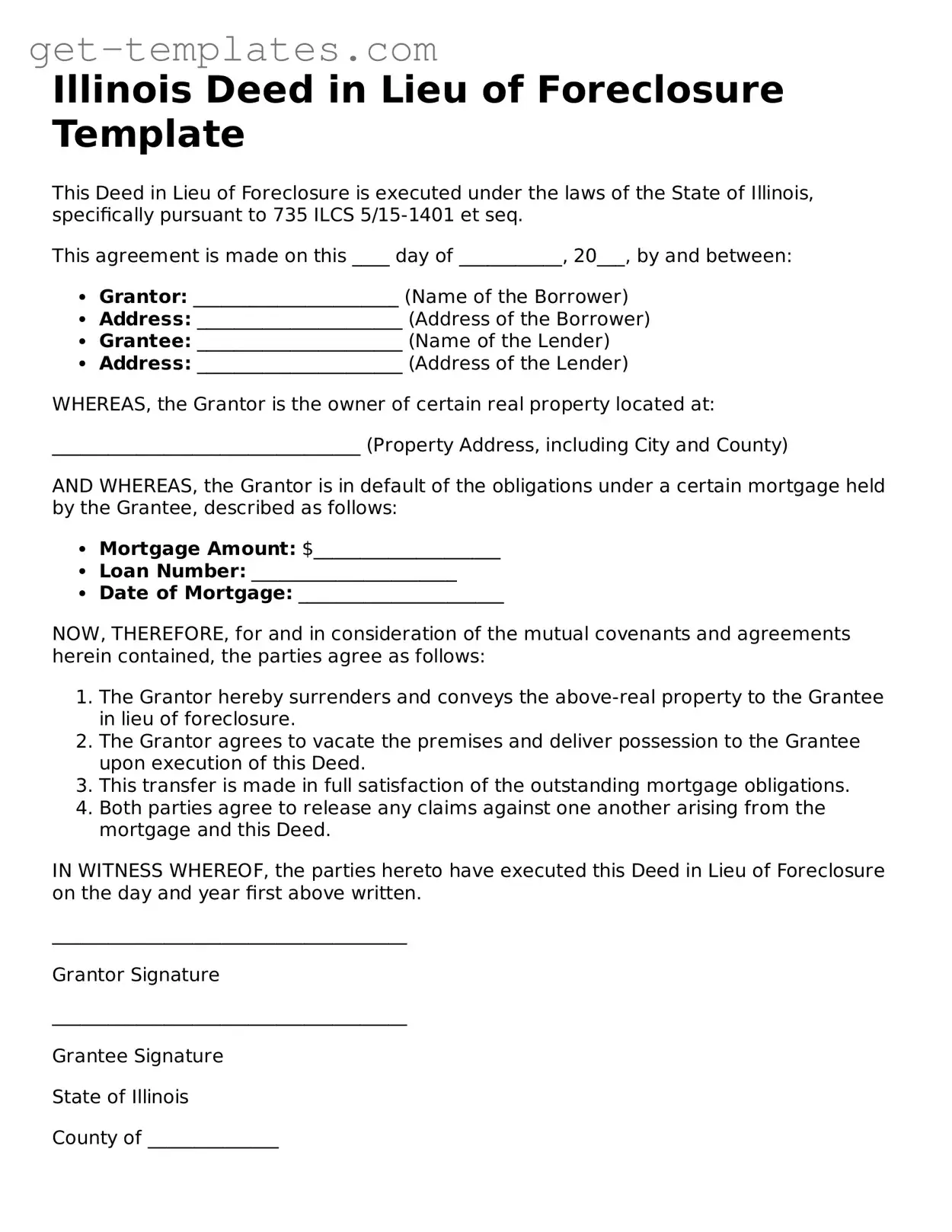Illinois Deed in Lieu of Foreclosure Template
This Deed in Lieu of Foreclosure is executed under the laws of the State of Illinois, specifically pursuant to 735 ILCS 5/15-1401 et seq.
This agreement is made on this ____ day of ___________, 20___, by and between:
- Grantor: ______________________ (Name of the Borrower)
- Address: ______________________ (Address of the Borrower)
- Grantee: ______________________ (Name of the Lender)
- Address: ______________________ (Address of the Lender)
WHEREAS, the Grantor is the owner of certain real property located at:
_________________________________ (Property Address, including City and County)
AND WHEREAS, the Grantor is in default of the obligations under a certain mortgage held by the Grantee, described as follows:
- Mortgage Amount: $____________________
- Loan Number: ______________________
- Date of Mortgage: ______________________
NOW, THEREFORE, for and in consideration of the mutual covenants and agreements herein contained, the parties agree as follows:
- The Grantor hereby surrenders and conveys the above-real property to the Grantee in lieu of foreclosure.
- The Grantor agrees to vacate the premises and deliver possession to the Grantee upon execution of this Deed.
- This transfer is made in full satisfaction of the outstanding mortgage obligations.
- Both parties agree to release any claims against one another arising from the mortgage and this Deed.
IN WITNESS WHEREOF, the parties hereto have executed this Deed in Lieu of Foreclosure on the day and year first above written.
______________________________________
Grantor Signature
______________________________________
Grantee Signature
State of Illinois
County of ______________
Subscribed and sworn before me this ____ day of ___________, 20___.
______________________________________
Notary Public
My commission expires: _______________
